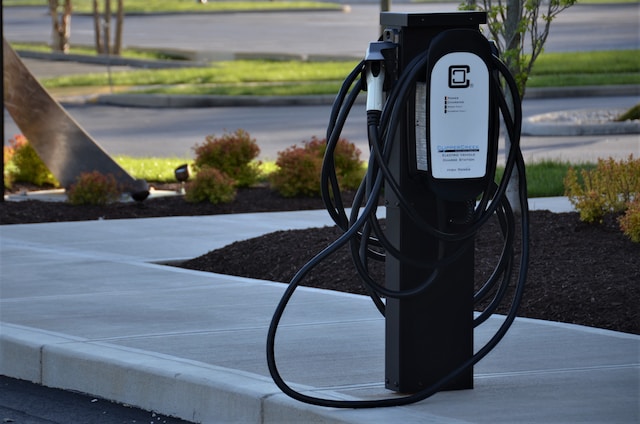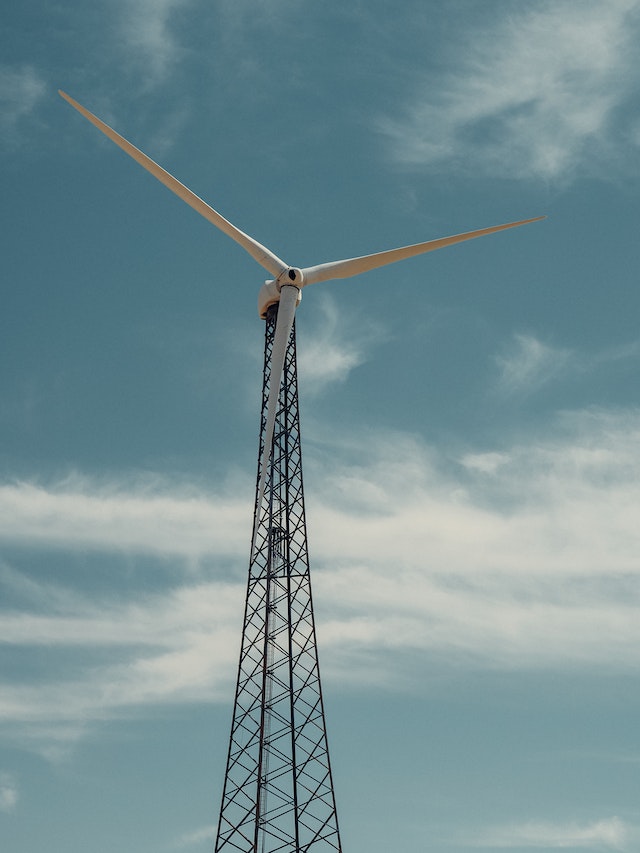Amidst the escalating concerns about climate change, it has become increasingly imperative for governments, businesses, and individuals alike to address the urgent need for solutions. Energy efficiency is the cornerstone of a sustainable future. By optimizing the way we generate, distribute, and consume energy, we can significantly reduce greenhouse gas emissions and minimize our carbon footprint. It is a pivotal solution that not only offers environmental benefits but also presents immense economic and societal advantages.

Key Concepts and Principles
Energy efficiency refers to the practice of utilizing energy resources in a manner that maximizes output while minimizing energy consumption. It involves optimizing energy use throughout various sectors to achieve the desired outcomes with the least amount of wasted energy. The objective is to enhance the efficiency of energy systems and devices, reducing energy losses and saving valuable resources.
The Benefits of Energy Efficiency
- Environmental Impact: Energy efficiency plays a critical role in reducing greenhouse gas emissions responsible for climate change. By improving energy efficiency, we can decrease our reliance on fossil fuels and transition to cleaner, renewable sources of energy. Conserving energy through efficiency measures also helps preserve natural resources and ecosystems.
- Economic Advantages: Energy efficiency can lead to substantial cost savings for individuals and businesses alike. By reducing energy consumption, households and companies can lower their energy bills, freeing up resources for other investments. Additionally, increased energy efficiency can spur job creation in sectors such as renewable energy and green technology, fostering economic growth.
- Energy Security: Enhancing energy efficiency reduces dependence on foreign energy sources, enhancing energy security for nations. By reducing energy consumption, countries can decrease their vulnerability to energy price fluctuations and geopolitical tensions related to energy resources.
Key Principles of Energy Efficiency
Energy Audits: Conducting energy audits helps identify areas of energy wastage and inefficiency. By assessing energy use patterns and analyzing energy consumption data, individuals and organizations can pinpoint opportunities for improvement.
Efficient Technologies and Practices: Utilizing energy-efficient technologies and adopting energy-saving practices can significantly enhance energy efficiency. Examples include energy-efficient appliances, LED lighting, insulation, and optimized heating, ventilation, and air conditioning (HVAC) systems.
Behavioral Changes: Encouraging and promoting energy-saving habits and behaviors among individuals can have a considerable impact on energy efficiency. Simple actions like turning off lights when not in use, using natural lighting whenever possible, and adjusting thermostat settings can contribute to significant energy savings.
The Climate Change Challenge

The Earth’s average temperature is steadily increasing due to the excessive accumulation of greenhouse gases in the atmosphere. This rise in temperature leads to a range of severe consequences, including more frequent and intense heatwaves, droughts, hurricanes, and flooding. These extreme weather events disrupt ecosystems, endanger human lives, and have detrimental effects on agriculture, infrastructure, and economies.
Human activities, particularly the burning of fossil fuels and deforestation, are the primary factors driving climate change. Carbon dioxide (CO2) emissions from the combustion of fossil fuels contribute significantly to the greenhouse effect, trapping heat in the atmosphere and causing global warming. Deforestation intensifies the greenhouse effect, as trees absorb CO2 and their removal reduces the planet’s ability to mitigate climate change naturally.
Energy efficiency presents a practical and feasible solution to tackling climate change. By enhancing energy efficiency, we can reduce energy consumption and decrease the demand for fossil fuels, mitigating greenhouse gas emissions. Energy efficiency measures are readily available and applicable across all sectors, from residential homes and commercial buildings to industries and transportation.
Energy Efficiency in Buildings
Buildings are major contributors to energy consumption and greenhouse gas emissions. Implementing energy efficiency measures in the construction and operation of buildings is crucial in reducing their environmental impact. Energy-efficient buildings not only decrease energy consumption but also enhance occupant comfort, improve indoor air quality, and promote sustainability. Here are some key aspects to consider when it comes to energy efficiency in buildings.
- Design and Materials:
Building design plays a pivotal role in energy efficiency. By utilizing passive design strategies, such as optimizing window placement, insulation, and shading, buildings can reduce their reliance on artificial heating and cooling systems. Additionally, using energy-efficient materials, such as low-emissivity windows and insulation with high thermal resistance, can further minimize heat transfer and energy loss.
- Efficient HVAC Systems:
Heating, ventilation, and air conditioning (HVAC) systems are significant contributors to energy consumption in buildings. Implementing efficient HVAC systems can significantly reduce energy usage. This includes using programmable thermostats, energy recovery ventilation (ERV) systems, and high-efficiency HVAC equipment. Regular maintenance and servicing of these systems also contribute to their optimal performance.
- Lighting:
Lighting accounts for a substantial portion of a building’s energy consumption. Implementing energy-efficient lighting solutions can significantly reduce energy usage and costs.

Transitioning to light-emitting diode (LED) lighting, which consumes less electricity and lasts longer than traditional incandescent bulbs, is a cost-effective and environmentally friendly choice. Incorporating natural lighting through well-placed windows and skylights can also minimize the need for artificial lighting during daylight hours.
- Smart Building Technologies:
Advancements in technology have paved the way for innovative solutions in building energy efficiency. Smart building technologies, such as automated lighting and HVAC systems, occupancy sensors, and advanced energy management systems, enable optimal energy usage by adjusting settings based on real-time data. These technologies enhance energy efficiency while providing convenience and control for building occupants.
- Behavioral Changes:
In addition to technological solutions, promoting energy-saving behaviors among building occupants is crucial. Educating occupants about the importance of energy efficiency and encouraging simple actions like turning off lights when not in use, using natural ventilation whenever possible, and adjusting thermostats to moderate temperatures can collectively lead to significant energy savings.
- Certifications and Standards:
Certifications and standards such as LEED (Leadership in Energy and Environmental Design) and Energy Star provide guidelines and criteria for energy-efficient building design and operation. Striving for these certifications can help developers and building owners optimize energy efficiency and demonstrate their commitment to sustainability.
Energy Efficiency in Transportation
As the world grapples with the challenges of climate change, it has become imperative to address energy efficiency in transportation. The transport sector is a significant source of greenhouse gas emissions.

Implementing energy-efficient practices and technologies in transportation can reduce these emissions and promote a sustainable future. Here are some key aspects to consider when it comes to energy efficiency in transportation.
Efficient Vehicles:
The Shift to Electric Mobility: Electric vehicles (EVs) have emerged as a promising solution for reducing carbon emissions in transportation. By replacing traditional internal combustion engines with electric motors, EVs eliminate direct emissions. Governments can incentivize the adoption of EVs through grants, rebates, and infrastructure development.
Hybrid Technology: Hybrid vehicles combine internal combustion engines with electric motors, offering improved fuel efficiency and reduced emissions. Hybrid technology allows for optimal energy usage by utilizing both electric power and gasoline.
Lighter Materials: Reducing the weight of vehicles through the use of lighter materials like carbon fiber and aluminum helps improve fuel efficiency. Lighter vehicles require less power and consume less energy during transportation.
Efficient Infrastructure:
Smart Traffic Management Systems: Implementing intelligent traffic management systems can reduce congestion and optimize traffic flow. This leads to smoother traffic patterns, minimizing fuel consumption and energy waste due to idling vehicles.
Public Transportation Upgrades: Investing in energy-efficient public transport systems, such as buses and trains, encourages people to use these modes of transportation over private vehicles. Efficient public transportation options reduce the number of cars on the road and alleviate congestion, resulting in lower energy consumption.

Cycling and Walking Facilities: Developing infrastructure that promotes walking and cycling can significantly reduce the reliance on motorized transport. Encouraging active transportation modes not only benefits health but also reduces energy consumption and greenhouse gas emissions.
Efficient Driving Practices:
Eco-Driving: Promoting eco-driving practices, such as maintaining steady speeds, avoiding rapid accelerations and decelerations, and anticipating traffic conditions, can lead to significant fuel savings. Educating drivers on eco-driving techniques can contribute to energy efficiency in transportation.
Carpooling and Ride-Sharing: Encouraging carpooling and ride-sharing initiatives can help reduce the number of vehicles on the road. Sharing rides maximizes vehicle occupancy, resulting in improved energy efficiency and decreased emissions per passenger.
Efficient Maintenance: Regular vehicle maintenance, including tire inflation checks, engine tune-ups, and air filter replacements, ensures optimal performance and fuel efficiency. Well-maintained vehicles consume less energy and release fewer emissions.
Future Trends and Innovations in Energy Efficiency
It is crucial to explore the future trends and innovations that hold the promise of further elevating our efforts toward a sustainable future.
1. Advanced Energy Management Systems:
Advancements in technology have paved the way for more sophisticated energy management systems. These systems leverage artificial intelligence (AI) and machine learning algorithms to analyze real-time data and optimize energy usage. By continuously monitoring and adjusting energy consumption patterns, these systems can identify inefficiencies and implement proactive measures to enhance energy efficiency.
2. Internet of Things (IoT) Integration:
The integration of IoT technology with energy systems offers exciting possibilities. Imagine a future where appliances, lighting, and HVAC systems seamlessly communicate with each other, optimizing energy consumption based on occupancy, weather conditions, and individual preferences. IoT integration enables smart grid functionality, allowing for real-time monitoring, analysis, and adjustment of energy usage, ultimately leading to significant energy savings.
3. Building-Integrated Renewable Energy Systems:
The integration of renewable energy systems into the built environment is a burgeoning trend in energy efficiency. Building-integrated photovoltaics (BIPV), for example, involves incorporating solar panels into building materials such as windows, roofs, and facades. This innovative approach not only generates clean energy but also improves the overall energy efficiency of the building by reducing the need for external energy sources.
4. Energy Storage Solutions:
The development of advanced energy storage technologies is a game-changer for energy efficiency. Efficient energy storage systems enable the capture and storage of excess energy generated during periods of low demand, which can be utilized during peak demand. By optimizing energy usage and reducing reliance on the electrical grid, energy storage solutions contribute to enhanced energy efficiency and grid stability.

5. Green Building Materials and Design:
Innovations in materials science, such as aerogels, phase-change materials, and smart windows, offer improved insulation, temperature regulation, and daylight utilization, thereby reducing the overall energy consumption of buildings. Leveraging biophilic design principles that incorporate natural elements and green spaces can enhance occupant well-being and efficiency in energy use.
6. Electrification of Transportation:
The transition to electric vehicles (EVs) is gaining momentum as a significant driver of energy efficiency. Electric transportation eliminates direct emissions and relies on a grid powered by renewable energy sources. As EV technology continues to advance, with increased driving range and improved charging infrastructure, the electrification of transportation will contribute to a cleaner, more efficient future.
7. Circular Economy for Energy Efficiency:
Adopting a circular economy approach to energy efficiency involves optimizing resource utilization, reducing waste, and promoting recycling and reuse. Implementing life cycle assessments for products and systems, as well as embracing sustainable manufacturing practices, ensures that energy-efficient solutions are environmentally friendly from production to end-of-life.
The future of energy efficiency holds tremendous promise as we continue to innovate and explore new avenues for mitigating climate change. Leveraging advanced technologies, integrating renewable energy systems, prioritizing sustainable materials and design, and embracing holistic approaches like the circular economy are key to realizing a sustainable and energy-efficient future. By staying committed to these advancements, we can pave the way for a brighter tomorrow, ensuring a planet that thrives harmoniously with its inhabitants.


